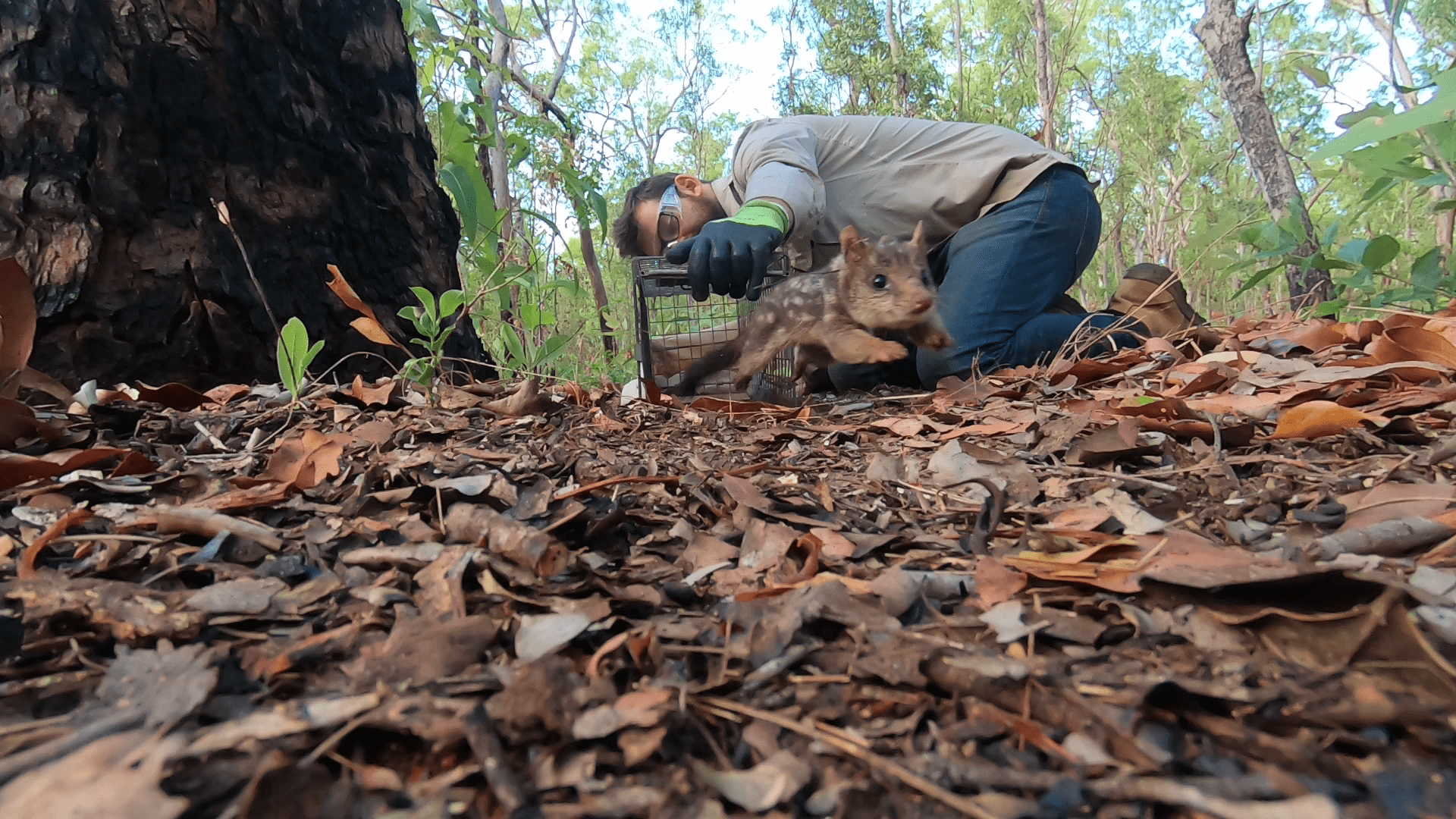A researcher at Charles Darwin University (CDU), Gavin Trewella, has been working to improve the conservation outlook for an iconic Australian native animal, the northern quoll.
 Charles Darwin University (CDU) researcher Gavin Trewella releases a northern quoll back into the Cape York bush after attaching a GPS transmitter. Image Credit: Charles Darwin University
Charles Darwin University (CDU) researcher Gavin Trewella releases a northern quoll back into the Cape York bush after attaching a GPS transmitter. Image Credit: Charles Darwin University
Once a common mammal in Northern Australia and a relative of the Tasmanian Devil, quolls have been facing rapidly declining populations due to cane toad invasion, extensive fires, grazing, and predation by feral cats.
Northern quolls are now classified as critically endangered in the Northern Territory and facing many immediate threats.
Northern quolls, the smallest among all quolls, are currently dotted around Australia’s northern coastlines, including in the Northern Territory, Far North Queensland and northern Western Australia.
Research Institute for the Environment and Livelihoods (RIEL) PhD candidate Mr Trewella has been collecting field data about a northern quoll population in the Cape York Peninsula through many long, hot field trips to Far North Queensland supported by Rio Tinto.
Mr Trewella deploys camera traps and uses GPS transmitters to track these elusive, agile nocturnal mammals in the savannas of Weipa, Cape York.
Mr Trewella’s research has found the northern quoll population there is restricted to a small number of specific bauxite plateaus that act as natural fire breaks and create ideal vegetation and hollows that provide a haven for quolls.
Separate research from CDU in the Territory has found feral cattle, horses may degrade habitat, with such habitat degradation then further increasing risks of predation by feral cats pose.
“My work is focused on identifying how the northern quoll’s population is influenced by the quality of their habitat,” Mr Trewella said.
“I hope to apply lessons learned to other quoll populations in Australia by working on creating habitats ideal for quolls.”
As quolls are also carnivorous, their feeding on poisonous cane toads has been a main factor in the dwindling quoll population.
“In the Northern Territory and the Kimberley region, quolls face the immediate effect of the cane toad invasion. I want to work out what the quolls need to persist with the current situation of cane toads,” he said.
“The Northern Quoll population is at its lowest across Australia. Using the data and finding from my research, I hope to help the northern quolls bounce back and repopulate.”
CDU ecologist and Northern Territory mammal expert, Professor John Woinarski, said the northern quoll had suffered a “catastrophic decline” over the years.
“There are not many spots in the Northern Territory where quolls can still be seen. Twenty years ago, you would often see quolls while out camping, but such happy sights are no longer the case,” Professor Woinarski said.
“It’s really important to try to understand how the quoll population can persist with cane toads, and we also need more information on fire regimes to protect quolls.”